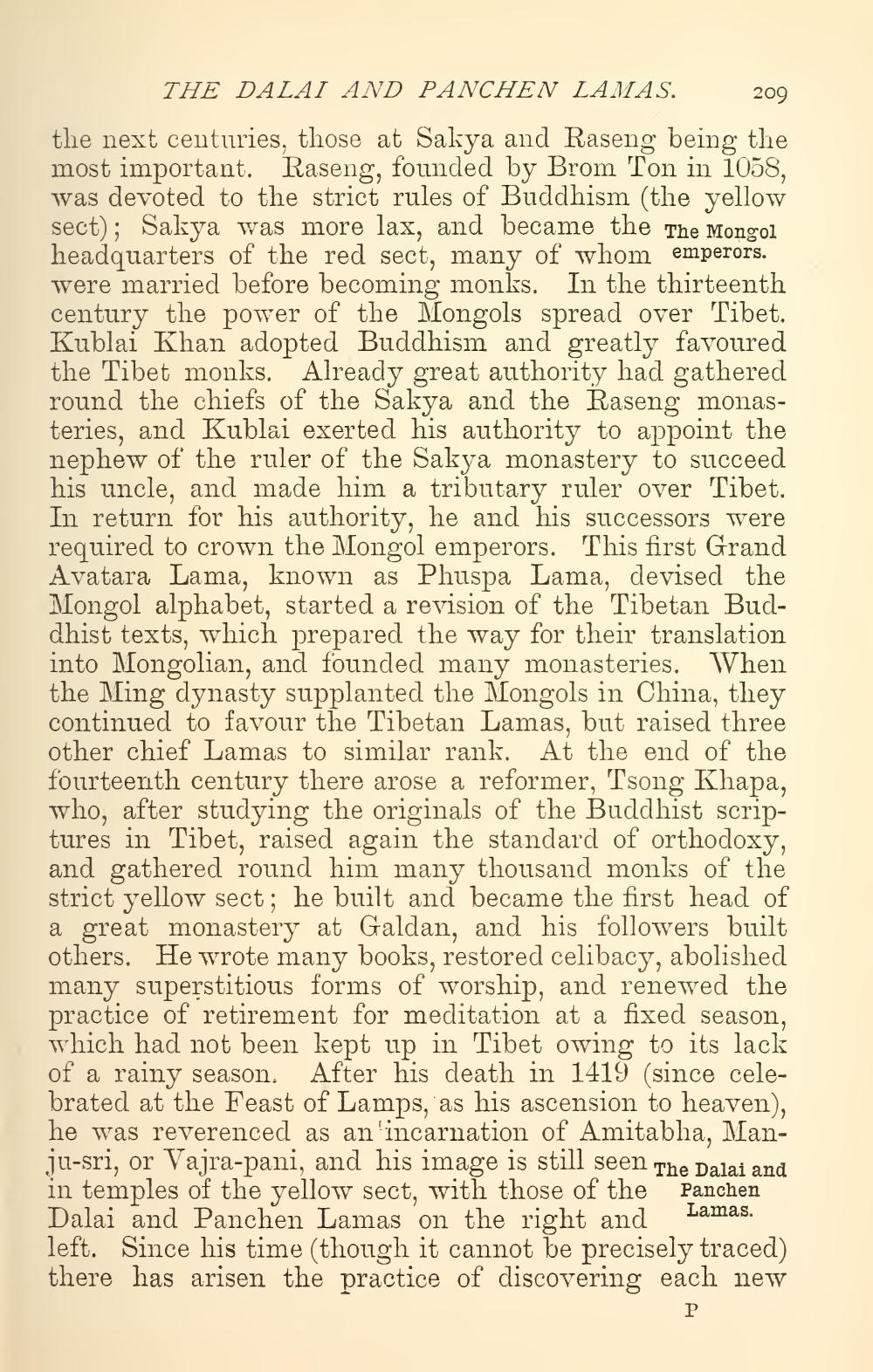________________
THE DALAI AND PANCHEN LAMAS. 209 the next centuries, those at Sakya and Raseng being the most important. Raseng, founded by Brom Ton in 1058, was devoted to the strict rules of Buddhism (the yellow sect); Sakya was more lax, and became the The Mongol headquarters of the red sect, many of whom emperors. were married before becoming monks. In the thirteenth century the power of the Mongols spread over Tibet. Kublai Khan adopted Buddhism and greatly favoured the Tibet monks. Already great authority had gathered round the chiefs of the Sakya and the Raseng monasteries, and Kublai exerted his authority to appoint the nephew of the ruler of the Sakya monastery to succeed his uncle, and made him a tributary ruler over Tibet. In return for his authority, he and his successors were required to crown the Mongol emperors. This first Grand Avatara Lama, known as Phuspa Lama, devised the Mongol alphabet, started a revision of the Tibetan Buddhist texts, which prepared the way for their translation into Mongolian, and founded many monasteries. When the Ming dynasty supplanted the Mongols in China, they continued to favour the Tibetan Lamas, but raised three other chief Lamas to similar rank. At the end of the fourteenth century there arose a reformer, Tsong Khapa, who, after studying the originals of the Buddhist scriptures in Tibet, raised again the standard of orthodoxy, and gathered round him many thousand monks of the strict yellow sect; he built and became the first head of a great monastery at Galdan, and his followers built others. He wrote many books, restored celibacy, abolished many superstitious forms of worship, and renewed the practice of retirement for meditation at a fixed season, which had not been kept up in Tibet owing to its lack of a rainy season. After his death in 1419 (since celebrated at the Feast of Lamps, as his ascension to heaven), he was reverenced as an 'incarnation of Amitabha, Manju-sri, or Vajra-pani, and his image is still seen The Dalai and in temples of the yellow sect, with those of the Panchen Dalai and Panchen Lamas on the right and Lam left. Since his time (though it cannot be precisely traced) there has arisen the practice of discovering each new




